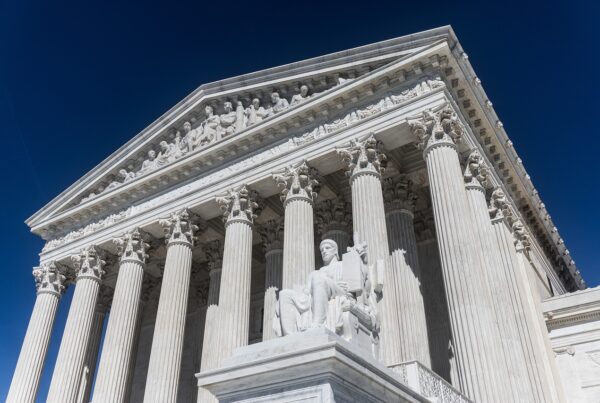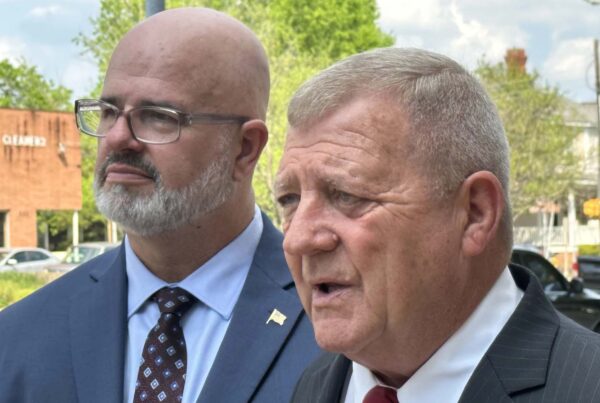In 2006, the federal government uncapped the amount of money grad students could borrow, and the implications are the focus of a new report using data from the Lone Star State.
Jeff Denning, an associate professor of economics at Brigham Young University and one of the coauthors of the team that brought this data together, joined the Texas Standard to talk about it. Listen to the interview above or read the transcript below.
This transcript has been edited lightly for clarity:
Texas Standard: Let’s dig into some of what the data tells us – and we should note, this is data from Texas. Why did you want to focus on Texas, and specifically, why focus on graduate students?
Jeff Denning: Yeah, that’s a great question. So Texas has great data infrastructure for education data. It also is a very interesting state for lots of reasons: It has a diverse set of students and lots of different programs, lots of different schools. So it’s a good place to study.
Why did we study graduate students? We have other work that’s looked at undergraduate students – and so it’s not like we’re opposed to studying them – but there’s a lot of money that goes to graduate education and comparatively little research about what the consequences of that money is, either for the students or for the schools. And so we wanted to kind of go somewhere where there wasn’t as much known.
And of course, you also have a very specific window: Back in 2006, the federal government effectively uncapped student borrowing for graduate programs. It sort of shifted the loans from private to federal debt, I guess is one way of thinking about that. What was the original impetus for that change?
That’s a great question. I’m not sure I know the answer, to be honest. We can speculate about what the motivations were. So I think some of the motivation was to shift people from borrowing, I think from private loans to public federally backed loans. But there are other reasons you could imagine people wanted to do this, like increase the number of students who could go to graduate school or help the students who are there graduate or earn more money afterwards. Those, I think, are likely candidates, but I don’t know for sure what people were saying.
One would expect also just increased general opportunity for Americans willing to put in the years of study to get an advanced degree. Well, so what does the data point to, ultimately – what did you find?
Yeah, so we looked at several things. The first thing we looked at is: Did this help students go to graduate school more often? I’ll just tell you the short answer – you know, it’s a much longer paper – but the short answer is no, it does not seem like more students were able to attend expensive programs as a result of this. And that’s true kind of overall, or for groups of students who are historically disadvantaged or not represented in higher education.
The next thing we find is we look and see if those students who are in graduate school, if they graduated more often. And the answer for that question is no, they didn’t graduate more often.
And then the last thing we look at is: Did this actually increase prices for graduate school? So this is a longstanding question in higher education. It’s called the “Bennett Hypothesis” after Department of Education Secretary [William Bennett]. The idea is if the government provides the subsidy, then maybe the schools are able to capture that money. And the way they do that is they’d raise their prices.
What did you find?
Yeah, we found that prices went up at programs that were more affected by this policy change. So prices went up pretty substantially.
Okay. Well, let me make sure I’ve got this summary then. So prices went up, debt load went up, but the ability of people from underserved communities did not increase. Am I correct?
That’s right.
Well, I know that it’s beyond the scope of this report to make any policy recommendations and that sort of thing. But what are people to make of this, and what sort of conclusions should everyday folks draw from this?
I think it pushes me to want to think more carefully about how we fund higher education. Is increasing access to loans the best way to do this? Should we do this through other mechanisms, say, by bigger investments in states so that it reduces tuition? There’s just lots of ways to do this, and we’ve done it historically – recently, anyway – with a lot of loans. And the question is, is that the right way to do this?
You’re being awfully careful here to avoid saying “no, it is not the right way to go about this.” But it seems like the data is pointing in that direction. What other options would there be?
So other countries fund graduate school differently than the United States. So they say, “Oh, we really need nurses.” And so we’re going to – as a country or as a state or something like this – fund nurses. And that’s not on the students’ responsibility. That’s more of the country’s responsibility. That’s one way you could imagine doing that. There are issues with that system, too. So there’s no system that I think is like, you know, without some issues to think about.
But there are other ways you could do it. You could implement accountability for graduate programs – so make rules about how they receive funding, and so it’s tied to student performance or something like that. You could implement caps like they had prior to 2006. There’s a lot of policy options. All of them have benefits and costs, but that’s what I would always say as an economist.















